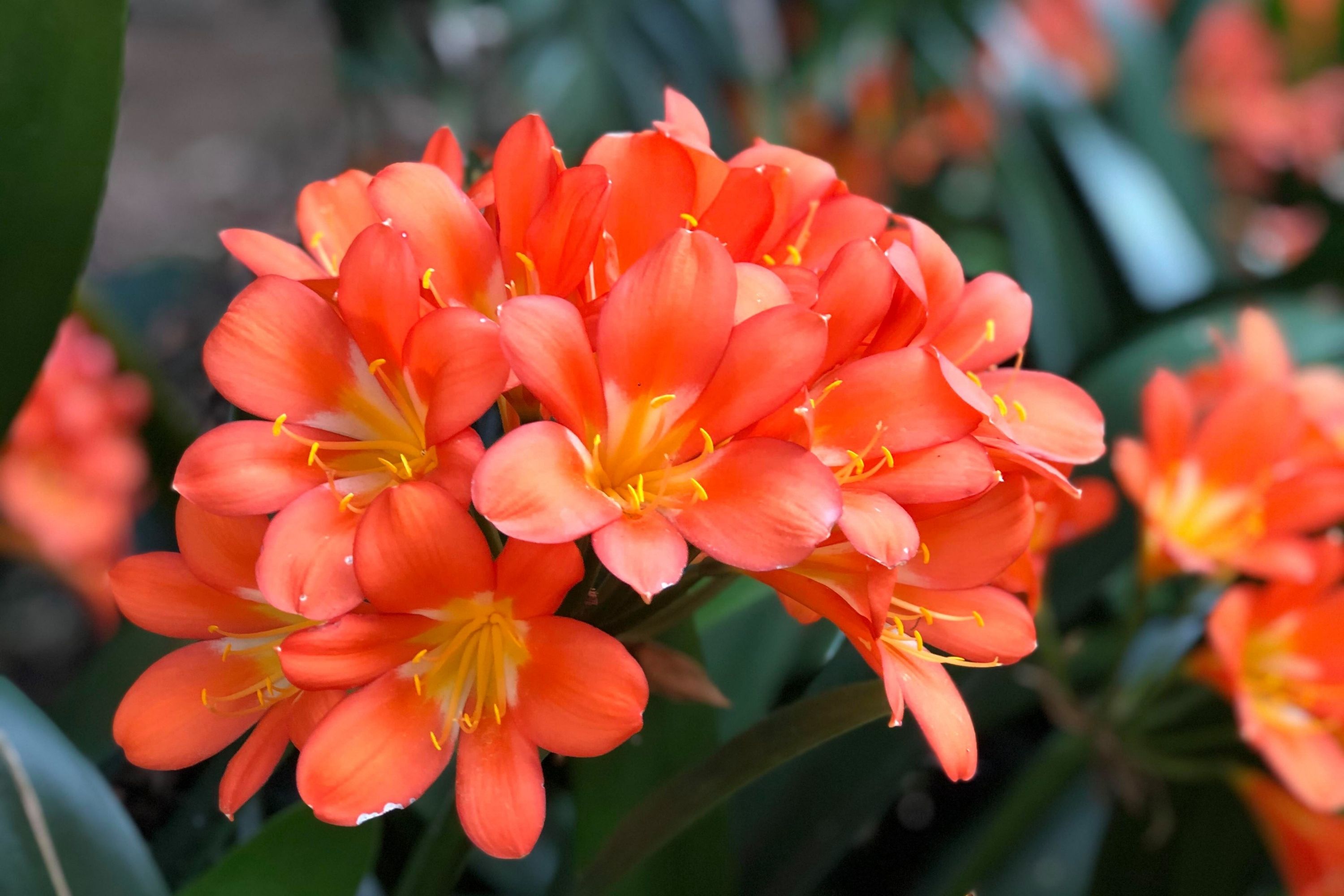Bush lily
(Clivia miniata)

Description
Clivia miniata is a popular indoor plant that belongs to the Amaryllidaceae family. This evergreen plant is native to the woodlands of South Africa and is popularly known as the bush lily. Clivia miniata has long, strap-like leaves and produces beautiful clusters of orange, red, or yellow flowers that can bloom for weeks. In this article, we will explore the history, characteristics, cultivation, and propagation of Clivia miniata. History and Origin: Clivia miniata was first discovered in the early 19th century by a British botanist, John Lindley. The plant was named after Lady Charlotte Florentina Clive, the Duchess of Northumberland, who was a great supporter of horticulture in the United Kingdom. Clivia miniata is native to the eastern provinces of South Africa, where it grows in shaded woodlands and rocky outcrops. Characteristics: Clivia miniata is a slow-growing evergreen perennial plant that can reach up to 50 cm in height and 60 cm in width. The plant has long, dark green, strap-like leaves that grow from a fleshy underground stem called a rhizome. The leaves can grow up to 60 cm in length and 5 cm in width. The flowers of Clivia miniata are trumpet-shaped and grow in clusters of up to 20 flowers. The flowers are usually orange, but can also be red, yellow, or cream. The fruit of Clivia miniata is a berry that contains several seeds. Cultivation: Clivia miniata is a popular indoor plant that is relatively easy to grow. The plant prefers indirect light and can tolerate low light conditions. It also prefers well-draining soil and requires regular watering during the growing season. However, it is important to avoid overwatering as this can lead to root rot. Clivia miniata can also be fertilized with a balanced fertilizer during the growing season. The plant can be propagated by division of the rhizomes or by seed. Propagation: Clivia miniata can be propagated by division of the rhizomes or by seed. When propagating by division, it is important to use a sharp knife to separate the rhizomes into sections, making sure that each section has at least one leaf and a few roots. The new plant can then be potted in a well-draining soil mix and watered regularly. When propagating by seed, it is important to wait until the berries are fully ripe before harvesting them. The seeds should then be removed from the pulp and planted in a well-draining soil mix. It can take up to six years for the new plants to flower when propagated by seed. Uses: Clivia miniata is primarily grown as an indoor ornamental plant. It is popular for its beautiful, long-lasting flowers and its ability to thrive in low light conditions. In addition to its ornamental value, Clivia miniata is also used in traditional medicine to treat various ailments such as wounds, coughs, and rheumatism. The plant contains several alkaloids that have medicinal properties. Conclusion: Clivia miniata is a beautiful and popular indoor plant that is relatively easy to grow. The plant is native to South Africa and is known for its long, strap-like leaves and beautiful clusters of orange, red, or yellow flowers. Clivia miniata can be propagated by division of the rhizomes or by seed and is primarily grown as an ornamental plant. In addition to its ornamental value, Clivia miniata is also used in traditional medicine for its medicinal properties.
Taxonomic tree:







